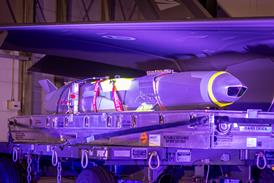IPTN has enlisted a team of European aerospace consultants to try to help secure Joint Airworthiness Authorities (JAA) type certification of its N250 regional turboprop. Jakarta-based consultancy Bramadi Pratama has recruited a group of former British Aerospace employees, ex-JAA officials and test pilots to assist IPTN and the Indonesian Directorate General of Air Communications (DGAC) with certification.
Bramadi's team of around eight consultants is understood to include John Williamson, who headed BAe's efforts to advise IPTN on JAA Joint Airworthiness Requirement (JAR) Part 25 certification of the smaller CN235-110, and John Bolton, formerly of the UK's Empire Test Pilot School.
IPTN's push for JAA recognition of DGAC type certification of the N250 follows setbacks with a similar plan for shadow endorsement by the US Federal Aviation Administration. The DGAC has told IPTN that the US authority will not recognise its N250-100 prototype PA2 as a validation vehicle because of a lack of component-document conformity.
The Indonesian manufacturer has since established a joint task force with its US subsidiary, American Regional Aircraft Industries (AMRAI), to tackle the problem and get the N250-100 and the planned follow-on 70-seat N250-200/N270 derivative programmes back on schedule (Flight International, 15-21 January, P5).
AMRAI and Bramadi have decided to pool their efforts in getting DGAC type certification in line with JAA and FAA required standards. "We're putting together a single programme in support of IPTN," says an AMRAI official.
While JAA and FAA requirements for N250 airworthiness are essentially similar and are based on shadowing the DGAC's certification process, the European authority, unlike its US counterpart, does not require a bilateral treaty with Indonesia. For this reason, JAR Part 25 certification is now expected ahead of Federal Aviation Regulation Part 25 approval some time towards the end of 1998.
It is understood that flight-test certification will begin with the PA3, now due to be flown in September. To ensure that the aircraft is fully compliant with FAA/JAA requirements and to avoid a repeat of the PA2 experience, PA3 airframe sections already assembled will be dismantled and then re-assembled in view of the DGAC. Two more certification aircraft, the PA4 and, finally, the SA1, are due to follow at four-monthly intervals.
Source: Flight International


























